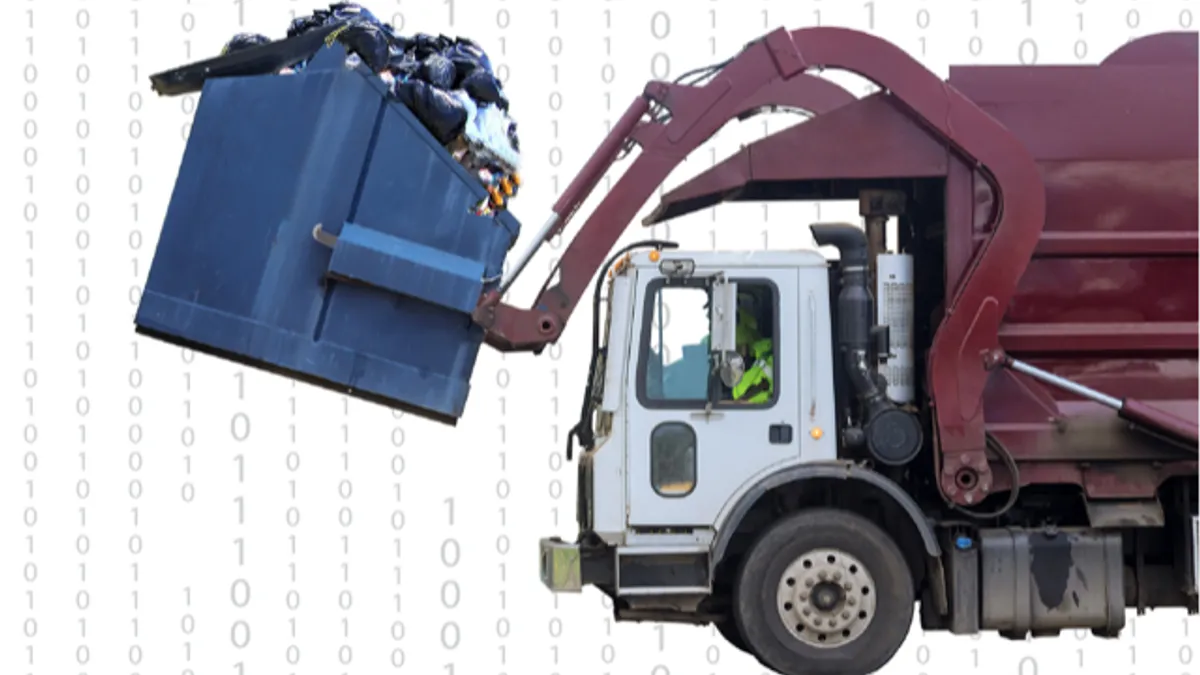To address a problem, you need to see the problem. Overloaded containers and contaminated recyclables have always represented costly problems for waste haulers. The challenge has been to identify the offenders and recover the additional costs scattered across hundreds of bins on a given route. Effectively, haulers have been blind.
On-truck camera systems and optical artificial intelligence (AI) now provide visibility on every lift. Where there was blindness, now there is sight. And with this vision, haulers can now address overflow and contamination issues effectively.
“Any hauler knows that overloaded containers will pack out a truck faster and result in unbudgeted disposal expense. The route delays and increased disposal costs are significant,” said Marc Shaener of JLT Hauling and Recycling. “We used to ask our drivers to take a picture and note overflows in the system. Participation and compliance by our drivers appeared to be almost nonexistent. Our concerns were confirmed after we incorporated WasteVision AI into our program and found that more than 10% of our containers were overloaded, hundreds of lifts per day if you were to extrapolate that fleet-wide. We now identify all of the overflows, and most importantly our customer base has been receptive and agreeable to the additional charges because WasteVision provides irrefutable evidence with time stamped photos. The pictures are not disputable, and ultimately the customer appreciates the close monitoring of their account and bringing light to needed service changes.
Comprehensive overflow data identifies where problems exist on a given route. Haulers can then engage with their clients to right-size accounts that experience chronic overflows. Those accounts that do not adjust service to their volume are then on notice that future overflows will result in appropriate fees and service charges.
“Typically, haulers charge overflows on 1% or fewer of their commercial lifts,” said Tony Genovese, CTO of WasteVision AI. “Our data shows that there are overflows on 8% to 12% of commercial bins, depending upon the route. The comprehensive data helps our clients prioritize their issues. They can proactively offer more service. If that isn’t accepted, a fee on future overflows shouldn’t come as a surprise. A picture of an overflow usually eliminates pushback.”
On-truck AI provides similar benefits in identifying recycling contamination. Before AI, contamination was usually spotted too late- at the MRF. Contaminated loads not only reduce the value of recycled materials, they also require expensive re-processing and disposal. High contamination levels have damaged and even eliminated recycling programs across the country.
“The key is tying the contamination to a specific generator. WasteVision AI not only identifies the contamination via the hopper camera, it provides a detailed report that ties contamination events to generators,” said Genovese. “This contamination data can be compiled over time and problem generators can be identified and targeted for education.”
Overflows and contamination have always been problems for haulers. For the first time, AI offers visibility across all generators so that these issues can be dealt with effectively. To learn more about how this technology can help your organization visit www.wastevision.ai.










